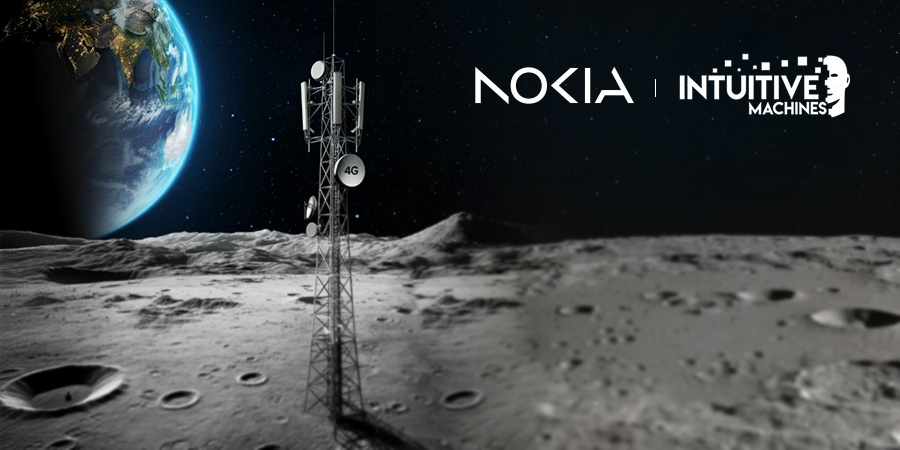Nokia and Intuitive Machines, Inc. have successfully integrated Nokia’s Lunar Surface Communication System (LSCS) into the IM-2 mission lander, Athena.
The goal is to deploy the first cellular network on the Moon during the upcoming mission to the lunar south pole region. After extensive testing and validation with Nokia Bell Labs, Intuitive Machines engineers installed the LSCS ‘network-in-a-box’ onto one of Athena’s upper carbon-composite panels. Precautions were taken to ensure the network’s safe journey to the Moon, survival during take-off and landing, and optimal operation on the lunar surface.
Latest Industry News: Nokia Enhances SONiC Support for Data Center Innovation
Futuristic Capabilities
The network is thermally isolated at 14 mounting points to protect it from deep space’s extreme temperatures. Additionally, the network is integrated into Athena’s Thermal Protection System to regulate heat during operation and protect it when idle. Nokia’s LSCS includes two device modules installed in lunar mobility vehicles: Intuitive Machines’ Micro-Nova Hopper and Lunar Outpost’s Mobile Autonomous Prospecting Platform (MAPP) rover. These vehicles will deploy on the lunar surface upon landing and use the Nokia device modules to connect to the network on Athena.
The LSCS uses 4G/LTE cellular technology adapted by Nokia Bell Labs for lunar missions. It will facilitate high-definition (HD) video streaming, command-and-control communications, and telemetry data between the lander and vehicles. Intuitive Machines plans to transmit data from the LSCS back to Earth using its direct-to-Earth data transmission service.
Interesting Read: Innovative Space Habitats: How NASA Plans to Grow Homes on the Moon and Mars
Cellular for Spatial Connectivity
Thierry Klein, President of Bell Labs Solutions Research at Nokia, stated that cellular technologies can provide reliable, high-capacity connectivity for future missions to the Moon and Mars. Nokia Bell Labs developed the LSCS, and Intuitive Machines created the Micro-Nova Hopper in collaboration with NASA’s Space Technology Mission Directorate. The second lunar mission aims to test new sensor instruments using the Micro-Nova Hopper and LSCS to identify and map resources like water and ice on the Moon.
The Mobile Autonomous Prospecting Platform (MAPP) rover, developed by Lunar Outpost, will explore the Moon’s south pole region, collecting data and transmitting it back to Earth via Nokia’s network on Athena. The launch of Intuitive Machines’s Athena lander is scheduled for late February and will be deployed from NASA’s Kennedy Space Center.
Stephen Altemus, CEO of Intuitive Machines, believes that delivering Nokia’s 4G/LTE system to the lunar surface is a significant step in commercializing space and advancing the lunar economy. These innovations, supported by NASA, are expected to define the Artemis generation.
More on Spatial Connectivity:
The Next Frontier for Space Exploration Involves The Utilization of Humanoid Robots
Space Sector Boosts IoT and Cloud Innovation
Space and Air-Based Networks Key to Reaching 2.7 Billion Still Unconnected







